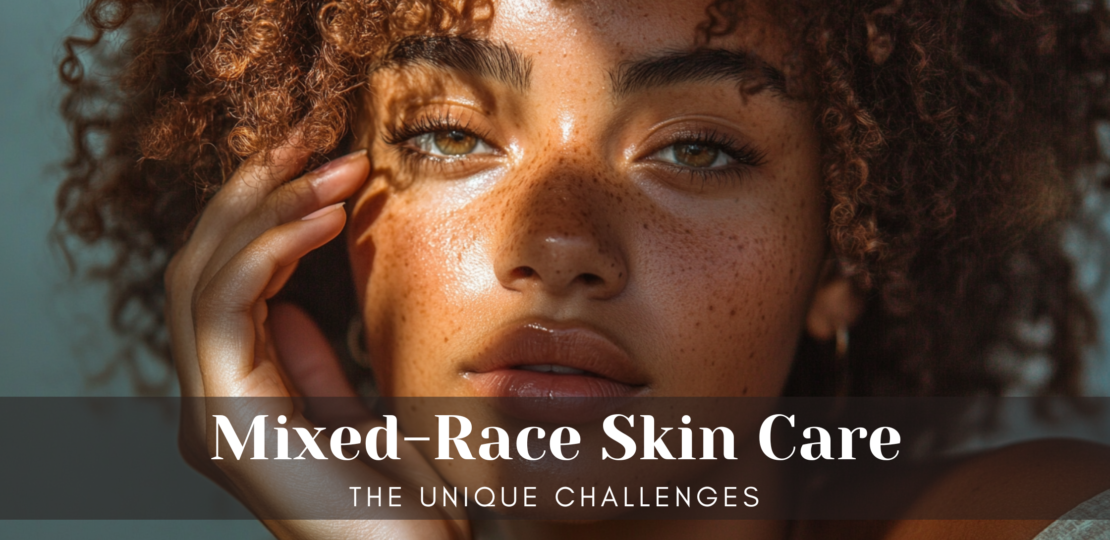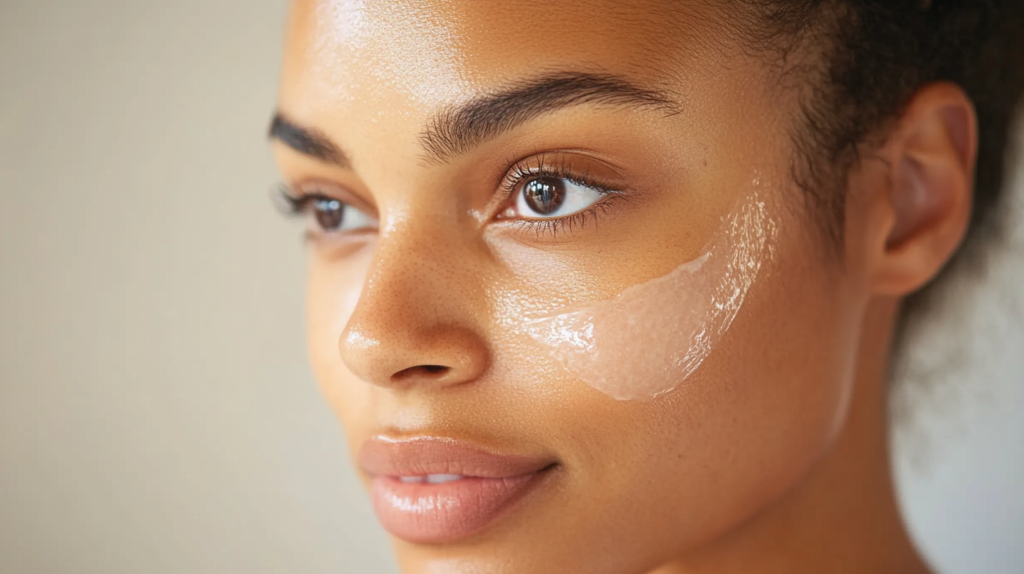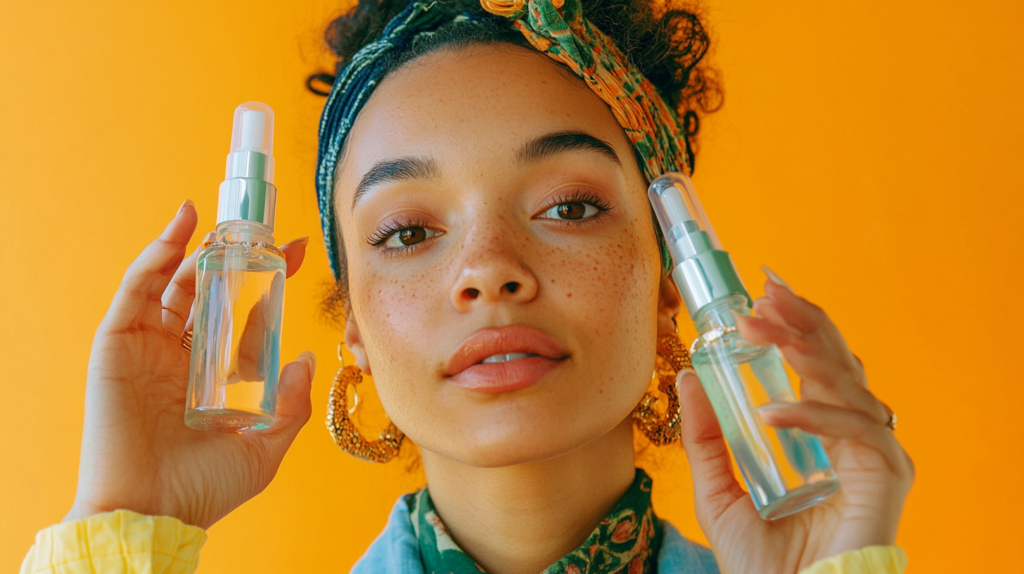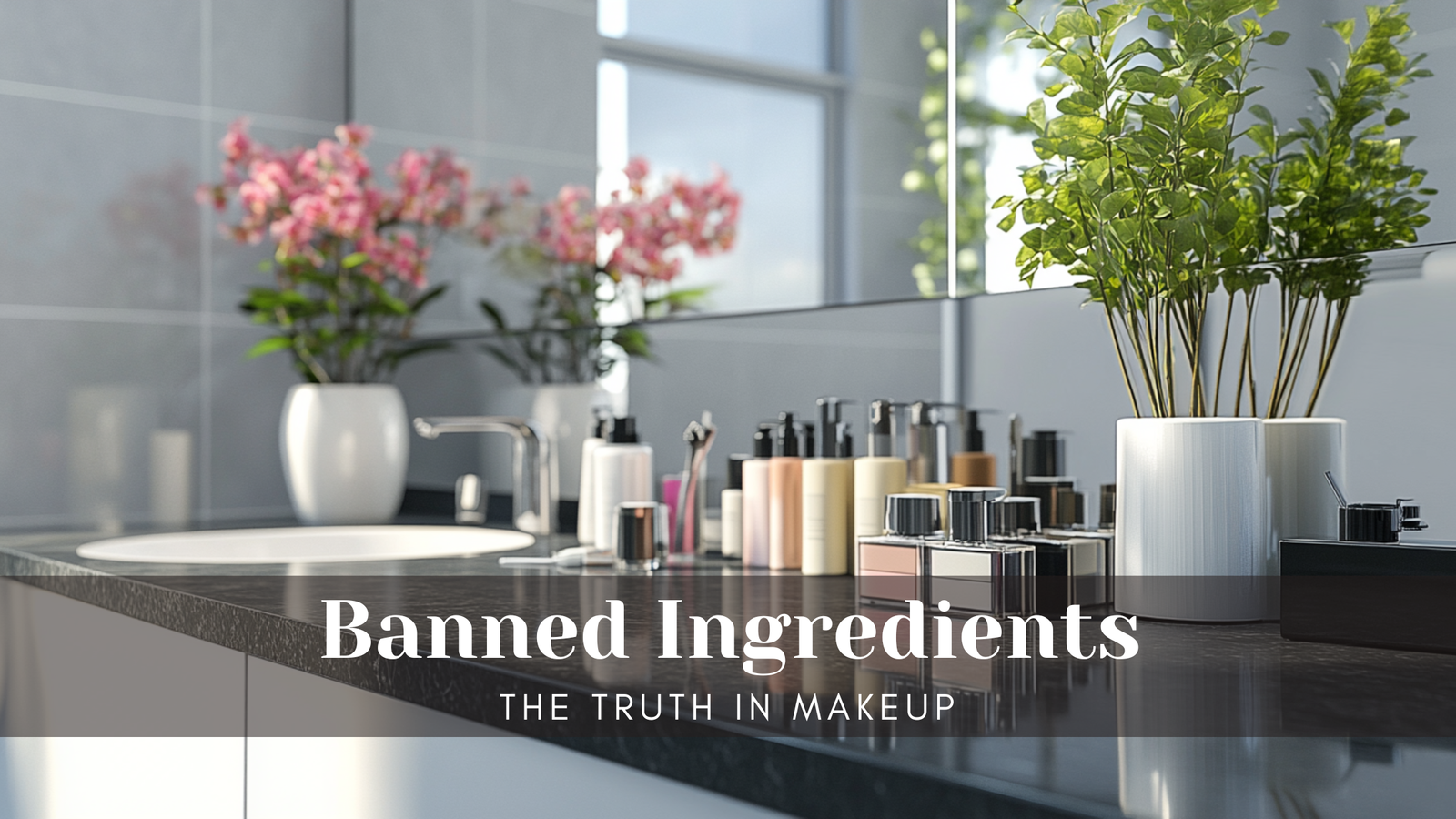
The Unique Traits of Mixed-Race Skin
Mixed-race skin blends traits from different ethnic backgrounds, creating unique skincare needs. This skin type is more likely to experience hyperpigmentation, requires different levels of hydration, and may be more sensitive. Melanin-rich skin can also have variations in oil production, moisture retention, and pH levels; therefore, a personalized skincare routine is important.
5 Key Takeaways
- Hyperpigmentation Requires Targeted Care
Mixed-race skin is prone to dark spots due to melanin overproduction. Ingredients like vitamin C, niacinamide, and AHAs help even skin tone without irritation. - Hydration is Non-Negotiable
Lipid-rich moisturizers with ceramides, hyaluronic acid, or shea butter combat dryness and reinforce the skin barrier. - Gentle Cleansing is Essential
Creamy or oil-based cleansers help preserve natural oils, reducing irritation and preventing excessive TEWL. - Sun Protection is Critical (Even for Darker Skin)
Daily use of broad-spectrum SPF 30+ prevents UV-induced pigmentation and premature aging, despite melanin’s natural protective properties. - Avoid Harsh Whitening Products
Hydroquinone or steroid-based lighteners may increase sensitivity and pigmentation issues over time. Instead, opt for brightening agents like licorice extract or kojic acid.

Key Concerns for Mixed-Race Skin
Hyperpigmentation
A common concern for mixed-race skin is hyperpigmentation, which appears as freckles, dark spots, or uneven patches from excess melanin. This can be triggered by inflammation, sun exposure, or even small skin injuries. To address this, use treatments with ingredients like vitamin C, niacinamide, and AHAs to help even out skin tone and prevent more discoloration. It’s also important to apply sunscreen with broad-spectrum SPF 30+ daily, as UV exposure can worsen pigmentation and cause long-term dark spots.
Hydration
Mixed-race skin often experiences changes in hydration levels, with some people being more prone to dehydration, particularly in dry or colder climates. As a result, the skin may feel tight, flaky, and have a weakened barrier, making it more vulnerable to irritation and environmental damage.
To address these issues, it’s helpful to use lipid-rich moisturizers that contain ceramides, hyaluronic acid, and shea butter. These ingredients work together to lock in moisture, strengthen the skin’s barrier, and keep the balance between hydration and oil production. Additionally, adjusting your skincare routine with the seasons can help better manage the changing environmental conditions.
Sensitivity
Many people with mixed-race skin have increased sensitivity to certain skincare ingredients, making them more prone to irritation, redness, and breakouts. This sensitivity may be caused by differences in skin barrier function or the combination of various genetic traits.
To reduce irritation, it’s important to use gentle, non-comedogenic products that don’t contain harsh alcohols, synthetic fragrances, or sulfates. Hypoallergenic, oil-based, or creamy cleansers are a good choice to prevent dryness, and introducing new products slowly into your routine can help avoid unwanted reactions.

Tailored Skincare Strategies
1. Combatting Hyperpigmentation
Hyperpigmentation is a common issue for mixed-race skin, often caused by excess melanin from sun exposure, inflammation, or acne. To manage dark spots and uneven skin tone, it’s important to use brightening ingredients like niacinamide, vitamin C, or lycopene. These help control melanin production without damaging the skin or lightening it too much.
Chemical exfoliants like alpha hydroxy acids (AHAs) also help by gently removing dead skin cells, which promotes skin renewal and fades dark spots over time. However, it’s important not to over-exfoliate, as it can cause irritation and worsen pigmentation. Regular use of these ingredients, along with sun protection, will help maintain an even, balanced complexion.
2. Optimizing Hydration
Keeping skin hydrated is essential for mixed-race skin, as it may have different hydration needs depending on the climate and individual skin type. Lightweight, water-based serums with ingredients like hyaluronic acid provide deep hydration to the face without feeling greasy or clogging pores.
For the body, richer creams like shea butter help retain moisture, keeping the skin soft and preventing dryness. Ceramide-infused products are also important, as they strengthen the skin barrier, reduce water loss, and lock in moisture. By adjusting your hydration routine to match seasonal and environmental changes, you can maintain skin elasticity and overall health.
3. Managing Sensitivity
Mixed-race skin can be more sensitive to certain skincare ingredients, so it’s important to introduce new products slowly and gently. To avoid irritation and breakouts, steer clear of heavy oils, silicones, and harsh synthetic additives that might clog pores or damage the skin barrier.
Instead, choose hypoallergenic, fragrance-free cleansers, ideally oil-based or creamy formulas, to keep the skin balanced without stripping away natural oils. Patch testing new products before using them fully can also help reduce the risk of negative reactions. A simple routine with soothing, non-comedogenic ingredients will help prevent inflammation and keep your skin healthy.
4. Sun Protection
Even though melanin offers some natural protection, mixed-race skin is still at risk for UV damage, premature aging, and hyperpigmentation. Applying a broad-spectrum SPF 30+ sunscreen daily is crucial to prevent sun-induced dark spots and long-term skin damage. Tinted or lightweight, non-greasy sunscreens can make daily use more comfortable, especially for those who dislike heavy textures. Reapplying sunscreen throughout the day, especially in sunny or high-exposure environments, ensures continued protection. Additionally, adopting sun-protective habits like wearing hats, seeking shade, and using antioxidant-rich skincare can help reduce the risk of photoaging and uneven skin tone.

Product Selection and Routine Building
Cleansing
Choosing the right cleanser is key to keeping mixed-race skin healthy, as harsh formulas can strip away natural oils and damage the skin barrier. Gentle, lipid-replenishing cleansers like micellar water or turmeric-based formulas effectively remove dirt, excess oil, and makeup without drying out or irritating the skin.
Turmeric, known for its anti-inflammatory and brightening properties, helps soothe sensitive skin and promote an even complexion. Oil-based or creamy cleansers are especially beneficial for those with dry or sensitive skin, as they help maintain hydration and prevent water loss. A cleansing routine that preserves the skin’s natural moisture balance ensures a refreshed and healthy complexion.
Treatment
Targeted treatments are essential for addressing concerns like hyperpigmentation, dullness, and uneven skin tone. Serums with vitamin C are great for boosting radiance, promoting collagen production, and neutralizing free radicals, making them perfect for brightening the skin. Additionally, pigment-correcting ingredients like niacinamide, kojic acid, or licorice extract help fade dark spots and prevent further discoloration. These treatments should be introduced slowly and layered based on skin tolerance to avoid irritation. For best results, apply serums after cleansing and before moisturizing to maximize absorption and enhance their effectiveness in improving skin texture and tone.
Moisturizing
A well-structured moisturizing routine is essential for keeping mixed-race skin hydrated and balanced, as its hydration needs can vary. Layering hydration according to climate and skin type ensures the right balance between moisture retention and breathability. Lightweight, water-based gels or serums with hyaluronic acid are ideal for the face, providing deep hydration without clogging pores.
For drier areas or colder seasons, thicker creams with ingredients like ceramides, shea butter, or squalane help lock in moisture and strengthen the skin barrier. Adjusting moisturizers to match seasonal and environmental changes ensures the skin stays nourished, resilient, and free from excess dryness or oiliness.

Cultural and Practical Considerations
Recognizing Product Usage Differences
Skincare routines are often influenced by cultural practices and personal grooming habits, which can vary significantly among different ethnic groups. For instance, Black women may frequently use hair products containing oils or silicones, which can transfer onto the skin and potentially clog pores if not properly cleansed.
Similarly, Latina women may prefer full-coverage makeup or highlighter-rich products, which require thorough cleansing to prevent buildup and breakouts. Understanding these unique skincare influences can help individuals make informed choices when selecting products that complement both their beauty routines and skin health. Brands that acknowledge these cultural differences and develop inclusive formulations are better equipped to meet the diverse needs of mixed-race individuals.
Adapting to Environmental and Lifestyle Factors
Skincare is not one-size-fits-all, and factors like climate, pollution levels, and daily habits should shape an individual’s routine. For those living in humid environments, lightweight, non-comedogenic moisturizers and mattifying sunscreens help control excess oil production while maintaining hydration. In contrast, individuals in dry or colder climates benefit from richer creams and occlusive ingredients that prevent moisture loss.
Pollution levels also play a role, as urban dwellers may require antioxidant-rich products to combat environmental damage. Additionally, active lifestyles—including frequent travel, outdoor exposure, or wearing heavy makeup—necessitate adjustments in cleansing and hydration to maintain a balanced complexion. Personalizing a skincare routine based on both environmental and cultural considerations ensures long-term skin health and effectiveness.

5 Frequently Asked Questions
- How do I treat hyperpigmentation?
Use serums with vitamin C or niacinamide and exfoliate weekly with AHAs. Always pair with sunscreen to prevent further dark spots. - What’s the best moisturizer for mixed-race skin?
Ceramide-infused creams (e.g., CeraVe) or lightweight oils (rosehip, jojoba) provide hydration without clogging pores. - Can I skip sunscreen if my skin is dark?
No. Although melanin offers some natural protection, UV exposure still leads to pigmentation issues and increased skin cancer risks. - How often should I cleanse?
Cleanse once daily at night if your skin is dry or sensitive; twice daily if oily. Over-cleansing can strip moisture and cause irritation. - What ingredients should I avoid?
Stay away from harsh alcohols, synthetic fragrances, and hydroquinone (unless prescribed by a dermatologist) to prevent irritation and rebound pigmentation.
RELATED POSTS
View all



